
An international consortium of scientists studies the atmospheric exchange processes, dynamics, and chemistry in the alpine region from southern Germany to northern Italy in the TEAMx project. From June to July of 2025, we will contribute dedicated measurements of trace gases, aerosol particles, and ice nucleating particles to better understand their concentrations, composition, sources, and impact on air quality, clouds, and the formation of strong convection.
more
The article Secondary ice production – no evidence of efficient rime-splintering mechanism coauthored by the scientists from Cloud Microphysics Group at IMKAAF and Institute for Tropospheric Research (TROPOS, Leipzig), was selected as one of the three runners-up for the 2024 ACP Paul Crutzen Publication Award from more than 1300 articles submitted in 2024.
more
The atmosphere in the Netherlands is containing relatively high levels of reactive nitrogen compounds. Theses can alter the cloud condensation nuclei properties of aerosol particles and hence cloud properties. Therefore, we measured in April 2025 ammonia, volatile organic compounds and aerosol particle composition at two differently polluted locations in the Netherlands and also via a helicopter platform in the international CAINA project.
more
Under the motto "Atmospheric Physics: From Weather to Storms", girls from the 5th to 8th grade were able to gain interesting insights into the diverse work of atmospheric researchers at KIT on Girl's Day on April 3, 2025. The workshop was jointly organized and supervised by members of IMKAAF and IMKTRO.
more
The AAF member and KIT Distinguished Senior Fellow Dr. Ing. Karl-Friedrich Ziegahn was awarded the DIN Excellence Prize for his many years of active work as Chairman of the Presidential Committee "Research, Innovation, and Development".
more (only German)
KIT researchers have successfully collected their first set of INP concentration data in the Southern Hemisphere using the Portable Ice Nucleation Experiment (PINE) at the Kennaook Cape Grim Baseline Air Pollution Station (KCG) in Tasmania, Australia. Since November 2024, PINE has been measuring the pristine atmosphere at KCG, which is known to have some of the cleanest air in the world.
more
We recently welcomed Dr. Najin Kim from the Korean Institute of Science and Technology (KIST), South Korea as visiting scientist at our institute. The visit is part of the ongoing KIST efforts to foster academic excellence and collaboration across borders. With her expertise in aerosol and cloud condensation nuclei studies, Dr. Kim conducts and leads novel experiment series at our new dynamic cloud simulation chamber AIDAd.
more
In autumn 2024 we studied the impact of meteorological conditions on emissions of volatile organic compounds from beech and douglas fir trees at the new ECOSENSE station in the black forest. Emissions from individual leaves and fir needles at different locations in the canopy were measured on-line by mass spectrometry.

The new ACTRIS (Aerosol Clouds and Trace Gases Research Infrastructure) General Director Eija Juurola and Senior Officer Niku Kivekäs visited the Topical Centre for Cloud In-Situ Measurements situated at IMK-AAF.
more
Recent scientific progress in the field of ultrafine particles (UFP), the smallest constituents of airborne particulate matter, on air quality, climate, and human health were discussed on the 9th EFCA Ultrafine Particles Symposium. This included a dialogue with policymakers on the revision of the European Ambient Air Quality Directive for UFP. The symposium took place on July 3 - 4 in Brussels, Belgium. It is co-organized by KIT, GUS, CEEES, and EFCA and chaired by the head of IMK-AAF, Prof. Thomas Leisner.

The new video series "KIT-That's why" shows in five contributions what is special about KIT and what it means to study at KIT. In the contribution "Sustainability and Climate", the Institute of Meteorology and Climate Research also introduces itself and shows the diversity of research-oriented studies at KIT.

The campus tours at KIT Campus North have been revised and have been given a modern booking system. In addition to a general lecture on the main areas of research at KIT and the tour of the campus, scientific and technical facilities can also be visited. The employees themselves now provide insights into the facility and the daily tasks and issues.
AIDA is a bookable tour package and can be visited on Wednesdays between 09:30 and 11:00 am and on Thursdays between 12:30 and 14:00 pm.

The International Excellence Talk by Daniel Cziczo on Nov 29, 2023 entitled
Improving our understanding of Earth’s upper troposphere and lower stratosphere by combining aircraft and laboratory studies
is now available online. In his talk, Daniel Cziczo reviews how aircraft measurements and laboratory studies have been, and will continue to be used to better understand atmospheric chemistry, precipitation and our climate.
to the talk
In a joint project by the Universities of Munich (LMU, TU), Harvard and KIT, the air quality in Munich is comprehensively investigated. The aim of the project is to understand air pollution processes and improve air quality in the long term.
Initial measurements of aerosol particles and trace gases were carried out in August 2023 using a city-wide sensor network, mobile observations, remote sensing methods and detailed chemical analysis. KIT contributes reference measurements with mass spectrometers and an aerosol lidar. The results are now linked to models in order to develop strategies to improve air quality.

Dr. Daniel Cziczo was named KIT International Excellence fellow and has started his visit to the IMK-AAF beginning of October. The IMK-AAF and Daniel Cziczo are linked by years of excellent joint research in the laboratory as well as in the field. During his visit, we will work on new instrument developments and perform AIDA campaigns to validate instruments and elucidate recent aircraft observations made by Cziczo and his team.
We are honored and delighted to have Dan with us and are looking forward to our collaboration.
more
In June and July 2023, we measure the number, size, composition and ice nucleation capacity of aerosol particles on the Feldberg (1493 m asl.). Within the framework of the Swabian MOSES campaign, we investigate in particular the role of aerosols in extreme weather events.
more
In July and August 2023, our cloud chamber PINE (Portable Ice Nucleation Experiment) is measuring ice nucleating particles (INPs) at the High Altitude Research Station Jungfraujoch, next to the INP-instrument HINC-auto (automated Horizontal Ice Nucleation Chamber) operated by ETH Zürich. This is a first campaign to validate INP instruments used within the ACTRIS Cloud In Situ network.
more
Under the motto safe.clean.use, the KIT Climate and Environment Center organizes the Knowledge Week Environment & Resources from July 03 - 08, 2023, in the Triangle, Karlsruhe, and highlights topics on soil, water, subsurface, and air.
On the "Family & Friends Day", a cloud can be generated with the model of the Atmospheric Simulation Chamber AIDA and thus the role of aerosols and fine dust on cloud formation and climate can be explored.
more
Recently, the AIDA Atmospheric Simulation Chamber celebrated its 25th year of operation. For the anniversary, we produced a virtual tour of the AIDA laboratory in collaboration with the KIT Center for Technology-Enhanced Learning (ZML).
Explore the worldwide unique AIDA Atmospheric Simulation Chamber virtually, take a look inside the chamber and learn more about different measuring instruments and methods in the daily work of our scientists during your tour.
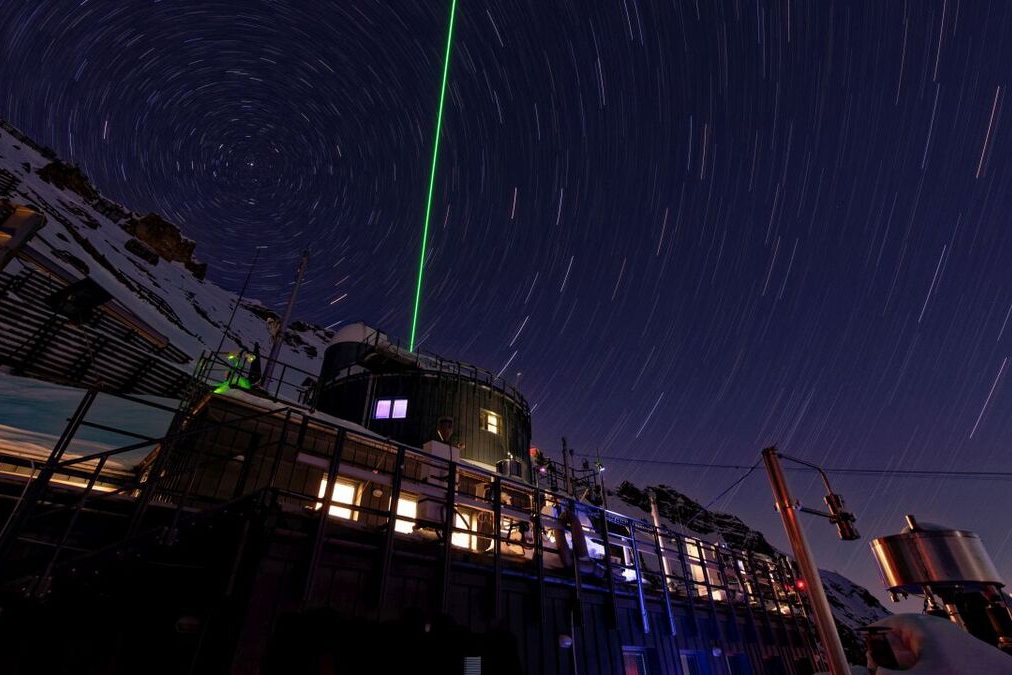
The European Commission has awarded the ACTRIS (Aerosol, Clouds and Trace Gases Research Infrastructure) research infrastructure its ERIC status.
The IMK-AAF is leading the topical center "Cloud in-situ" for the direct measurement of cloud processes, together with colleagues from the Leibniz-Institute for Tropospheric Research (TROPOS), Leipzig and the Sonnblick Observatory (Geopshere Austria), Vienna.

We are joining the long-term project of Naruki Hiranuma (WTAMU) at the italian Gruvebadet Atmospheric Observatory with our PINE chamber to investigate the ice-nucleating particle (INP) population in the high Arctic. The high Arctic is the fastest changing environment on Earth due to Arctic amplification. Sea ice melting and permafrost thawing affect the aerosol population and in turn the climate and the weather.
more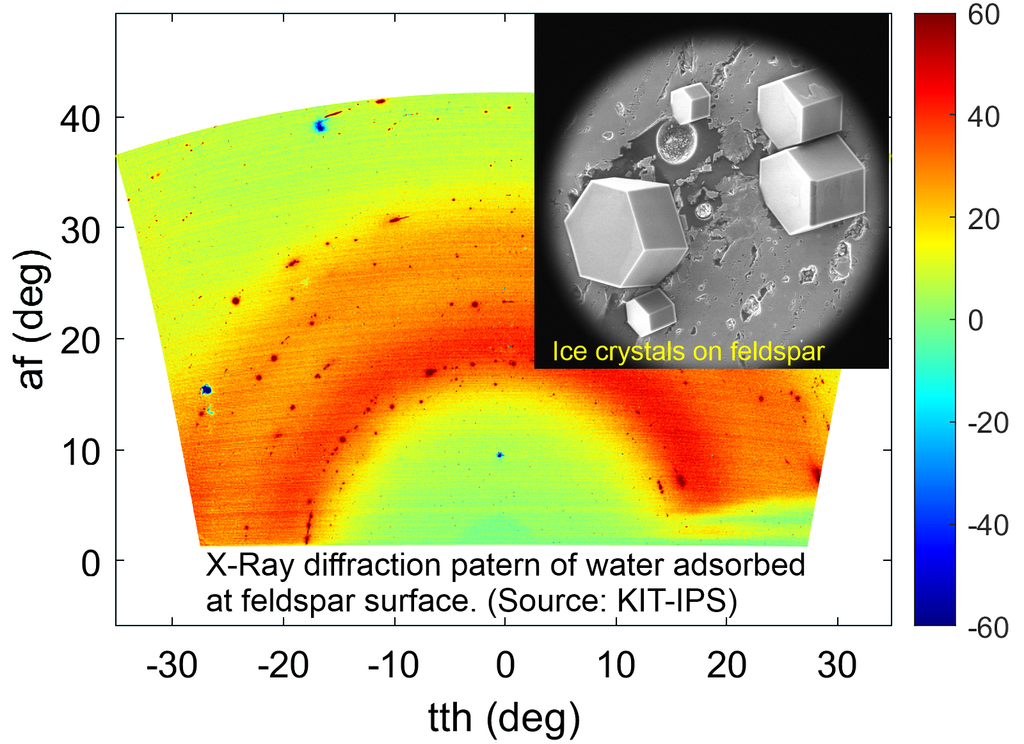
The Austrian Science Fund (FWF) and DFG has approved funding of a bilateral Austrian - German research project “Ice-nucleation activity of alkali feldspar in aerosol” (ICEFELD). This highly interdisciplinary project combining geo-materials science, atmospheric ice formation research, and computational physics will be carried out in collaboration between the cloud microphysics research group at IMK-AAF and University of Vienna.
more
A three-year long science program, IMPACTS, is launching it’s final phase to improve snowfall prediction. Advanced remote sensing and in-situ instruments will fly over the eastern seaboard to identify key processes and improve forecasting. The study aims to increase understanding of snowband formation and the microphysical characteristics of snow particles, thus improving prediction and public safety.
more
The atmospheric simulation chamber AIDA (Aerosol Interaction and Dynamics in the Atmosphere) was constructed at KIT between 1995 and 1997. It is in operation since 25 years for studying a large variety of trace gas, aerosol and cloud processes of importance for the environment, the weather systems and the global climate.

During our third participation of the Pallas Cloud Experiment (PACE), we use our Skywalker UAVs to sample ice-nucleating particles (INPs) up to 2 km, aiming to better understand the difference between ground-based and cloud-level INP measurements. The Portable Ice Nucleation Experiment (PINE) chamber was installed as a reference measure at the Pallas supersite and will continue monitoring INP concentrations over winter.
more
On a hill overlooking Karlsruhe air quality and transport of aerosol particles and trace gases are characterized. A scanning aerosol lidar measures aerosol particle distributions and trace gas and particle composition are determined by mass spectrometers. Nearby local emission sources as well as regional pollutant transport into the city will be determined for a summer period with heat waves.

The effects of ultrafine particles, the smallest constituents of airborne particulate matter, on air quality, atmospheric processes, climate, and human health were discussed on the 8th EFCA Ultrafine Particles Symposium. It reflected the most recent scientific progress in the field and aims to contribute to the dialogue with policymakers in Europe. The symposium took place on July 5 - 6 in Brussels, Belgium. It is co-organized by KIT, GUS, CEES, and EFCA and chaired by the head of IMK-AAF, Prof. Thomas Leisner.

The strong Saharan dust event over Europe reached our measurement locations at the Helmos Hellenic Atmospheric Aerosol and Climate Station (HAC2) in Greece and the Sonnblick Observatory (SBO) in Austria. The instrument PINE (Portable Ice Nucleation Experiment), continuously operated at both stations, measured a strong increase of the ice-nucleating particle (INP) concentration upon arrival of the dust at SBO on March 15th and at HAC2 on March 16th.
more
Starting the 1st of December 2021, Dr. Mohit Singh joined IMK-AAF after receiving the prestigious Alexander von Humboldt (AvH) Postdoctoral Research Fellowship Award. The research project of Dr. Mohit Singh is dedicated to the direct observation of ice multiplication in electrodynamic trap and will significantly advance our understanding of droplet shattering mechanism regarded as one of the important pathways of rapid glaciation of mixed phase clouds.
more
In October 2021, Dr. Stephanie Jones started at the IMK-AAF after having successfully obtained DFG funding for her own position. Her research will investigate the transformations of brown carbon aerosol using single droplet levitation techniques and cloud chamber experiments.
more
Since October 2021, PINE monitors ice-nucleating particle concentrations in the Rocky Mountains. Being located at 3200 m a.s.l., the site frequently provides free-tropospheric sampling conditions in an atmospheric layer where mixed-phase clouds occur.
more
The AIDArct experiment will reproduce Arctic atmospheric conditions in the AIDA chamber with the goal of parametrizing the effects of atmospheric transport on absorption and hygroscopicity of black carbon particles.
more
IMK-AAF contributed to field experiments in Iceland to investigate the mineral composition of Icelandic dust and its effects on climate. In the desert of Dyngjusandur/ Iceland airborne dust for ice nucleation experiments was collected.
more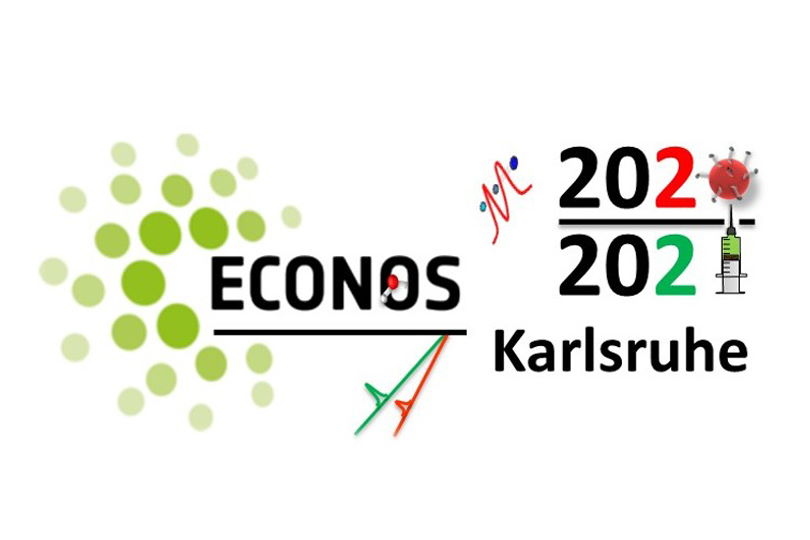
ECONOS 2020/2021, the annual meeting devoted to diverse topics in the field of nonlinear optical spectroscopy, is hosted by the Atmospheric surface-science (A.S.S) unit at IMK-AAF and held in Karlsruhe, Germany, from 26th to 29th September 2021.
more
The German Federal Ministry of Education and Research (BMBF) supports the development of the new research infrastructure ACTRIS-D. KIT will receive about 14 million Euros to establish new measurement facilities for cloud research, to significantly expand existing infrastructures and to equip them with state-of-the-art measurement technology.
more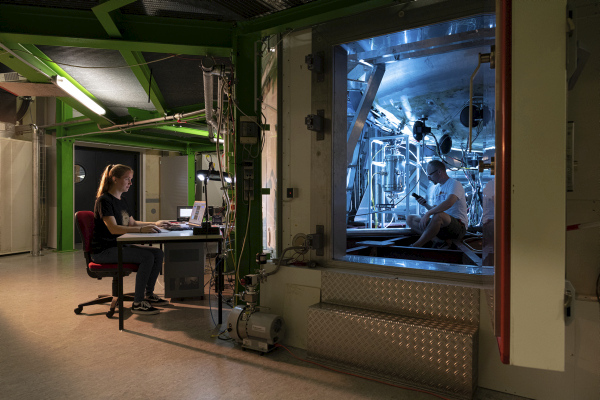
The CORAERO consortium will research the spread of SARS-CoV-2 and other viruses through bio-aerosol with the goal to develop new technologies for virus detection and inhibition.
more
End of April 2021, the mobile cloud expansion experiment PINE started a two months period for continuous measurements of ice-nucleating particles (INPs) at the Košetice National Atmospheric Observatory in the Czech Republic.
more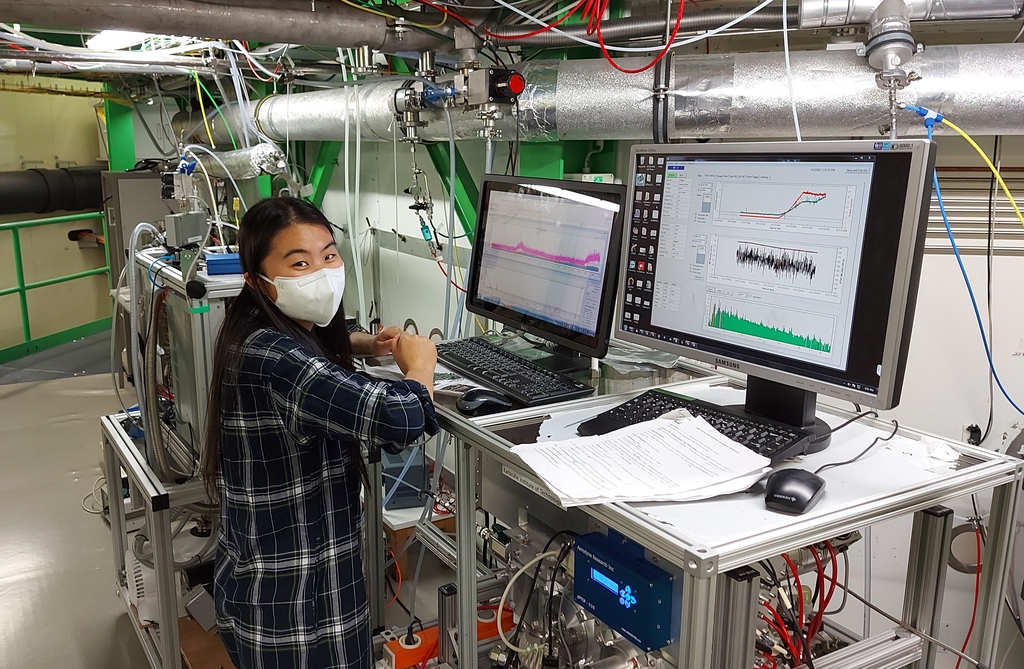
Many scientists from around the world have used the opportunity to virtually access the AIDA facility to do measurement campaigns in close collaboration with the local team. These activities are supported by the EU projects EUROCHAMP2020 and ATMO-ACCESS and allow use of the facility even if travelling is not possible.

The pressure in freezing cloud droplets rises until the ice shell cracks. These repetitive cracks are the source for small ice splinters which in turn may freeze further cloud droplets. With the help of thermography, internal pressures up to 170 bar could be detected.
more
KIT scientists study the evolution of Saharan dust plumes near Karlsruhe in the atmosphere and at the ground with the goal to determine their properties and to validate forecast models.
more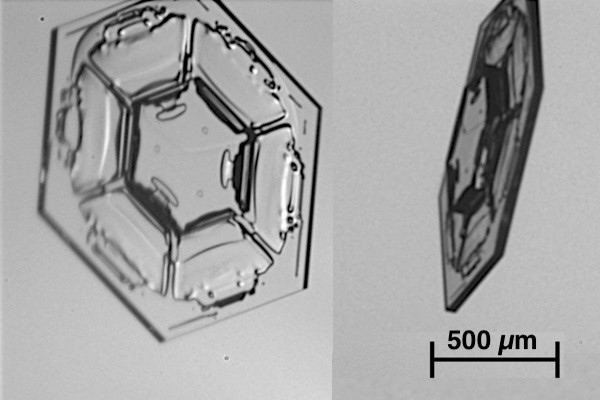
An open access database provides scientists and general public information on individual atmospheric ice crystals that were captured in their native environment using research aircrafts.
more
KIT researchers assume development and management of the CIS Topical Center for the direct measurement of cloud processes - Part of the European research infrastructure ACTRIS
more
The first study about the operation and application of our new mobile ice nucleation chamber PINE is accepted for publication in the journal „Atmospheric Measurement Techniques“.
more
ATMO-ACCESS is a new infrastructure project funded by the European Commission after application the INFRAIA-03-2020 call. The project will develop a new framework for access to distributed atmospheric Research Infrastructures. Among these infrastructures is the AIDA cloud simulation chamber of KIT.
more
With effect from Oct. 1 2020, the KIT Excecutive Board has appointed the retired former head of KIT Divison IV, Dr.-Ing. Karl-Friedrich Ziegahn as a KIT Distinguished Senior Fellow.
Dr. Ziegahn has selected IMK-AAF as his institutional host. We congratulate him on this distinction and are honored to welcome him as a member of the institute. With his expertise and network, he will be a valuable asset for our future development.

The KIT University of Excellence project "Research Infrastructure in Research-Oriented Teaching" (RI-RO) supports the integration of the large KIT research infrastructures into teaching activities.
more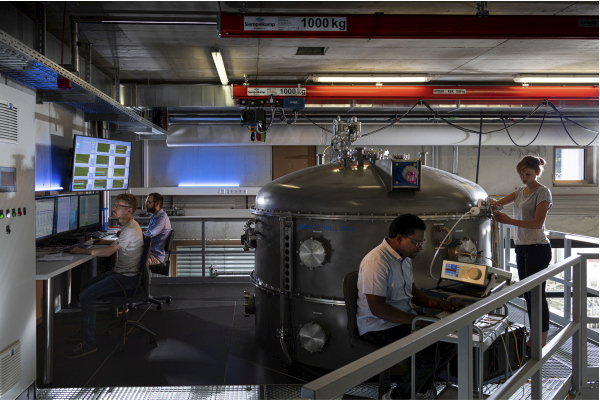
Based on more than 20 years of experience in operating the AIDA facility as a cloud simulation chamber, we have developed and started to operate the new dynamic cloud chamber AIDAd.
more
In August 2020, Dr. Abdelmonem received his prestigious “own position” grant from the DFG for the third time in a row. The project will tackle atmospheric surface chemistry on the molecular level using NLO spectroscopy. Project start date: 01.01.2021
more
On November 18 and 19, 2019, scientists from different fields of research on the subject of mineral dust came together for the 6th time now.
more
The German Federal Ministry of Education and Research decided to substantially support ACTRIS-D as one of three infrastructures recently selected for the National Roadmap on the installation of research infrastructures.
more
A first measurement campaign on MOSES heat waves took place in July 2018 near Jülich studying soil moisture, ground - atmosphere exchange processes, and the distribution of atmospheric aerosol particles
more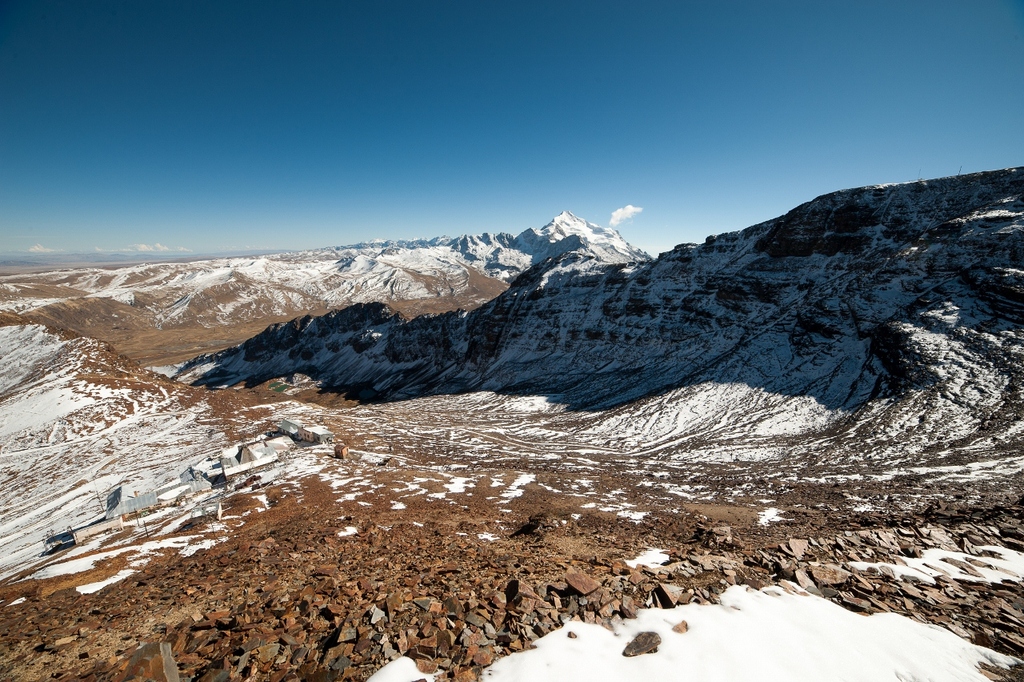
Research groups from La Paz, Stockholm, Helsinki, Innsbruck, Granada, Leipzig, and Karlsruhe combine their instruments to characterize the aerosol at the Chacaltaya GAW Station, Bolivia from November 2017 to June 2018.
more
Aerosol-cloud interaction is a first time focus of a field campaign at the SMEAR-II station in Hyytiälä, Finland.
more
IMK-AAF is participating in the MARCUS field campaign by monitoring the biological aerosol with the WIBS4 instrument.
more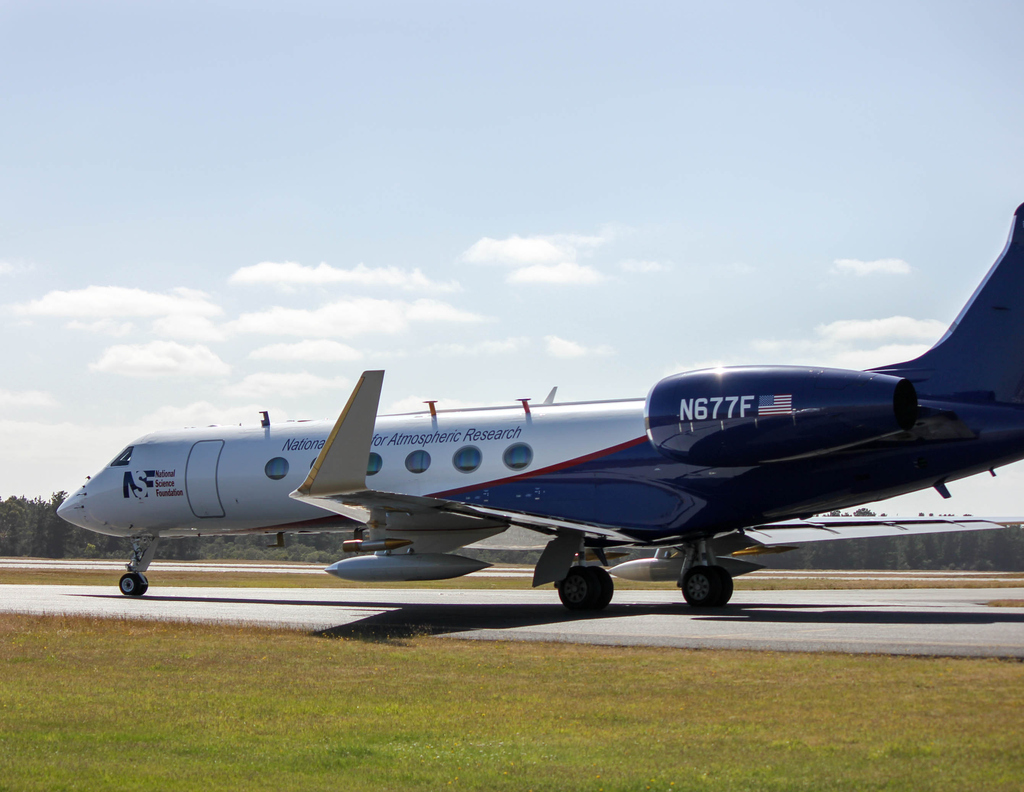
The IMK-AAF is participating the SOCRATES field campaign in Tasmania, Australia and is providing cloud microphysics measurements with the PHIPS probe.
more
In September 2017, Dr. Nsikanabasi Umo joined IMK-AAF following his prestigious Alexander von Humboldt (AvH) Postdoctoral Research Fellowship Award.
more
In July and August 2017 we participated in a joint research project on the three-dimensional observation of atmospheric processes in cities (3DO).
more
On May 22nd, 1997, our institute celebrated the formal opening of the new aerosol and cloud chamber facility AIDA. After about two years of construction and technical runs, the first scientific campaign started on May 11th, 1997, and investigated heterogeneous chemistry on soot aerosols. Since then, a number of 5 to 10 campaigns was conducted every year, covering topics of trace gas chemistry, heterogeneous chemistry, aerosol formation, aerosol optical properties, polar stratospheric cloud formation as well as formation, growth, morphology and radiative properties of ice crystals in tropospheric clouds. The aerosol-cloud research with AIDA is also the topic of a recent KIT podcast (in German). We are grateful to all our national and international collaboration partners who contributed and still contribute to many of the AIDA campaigns.

The first experimental determination of HDO/H2O isotopic fractionation factors for ice deposition in simulated cirrus clouds for temperatures betwen 190-233 K could be achieved in the AIDA aerosol and cloud chamber (Lamb et al., PNAS 2017). In collaboration between the University of Chicago, PTB, and KIT unique measurement techniques for water isotopes were developed and applied for dedicated cirrus cloud simulation experiments. A detailed box model analysis including wall effects resulted in equilibrium fractionation factors and kinetic isotope effects with a weaker temperature dependence than extrapolations of previous work suggested. These results are fundamental for inferring processes on Earth and other planets from water isotopic measurements.

During the INUIT-CLACE campaign in January and February 2017, international teams collaborate at the Jungfraujoch Research Station (3571 m, Switzerland) to investigate aerosol-cloud processes and cloud microphysics in the mixed-phase cloud regime. KIT contributes single particle mass spectrometer measurements of aerosol particles and cloud ice residuals, as well as measurements of ice nucleating particle (INP) concentrations by taking aerosol filter samples for later offline INP analysis with an immersion freezing method.

Between December 2016 and 2020 the EU invests ~9 Mio € to further integrate 16 simulation chamber and 4 calibration facilities. This includes the AIDA aerosol and cloud chamber facility of KIT. Trans national access to these facilities is substantially supported. For details contact us or see: www.eurochamp.org.

Scientists of IMK-AAF, in cooperation with researchers of the KIT Laboratory of Electron Microscopy (LEM) and University College London (UCL) have succeeded in identifying the unique features on K-Feldspar responsible for its high ice nucleation efficiency. As reported in Science magazine (DOI: 10.1126/science.aai8034), they combined electron microscopy observations with molecular modeling to determine for the first time the atomic nature of this important inorganic ice nucleating particle. They showed that ice starts to grow on the specific crystal faces with (100) orientation that only occur at defects (steps, cracks, and crevices) on the surface of feldspar particles.

The KIT in-house development PHIPS-HALO was chosen as the only non-US instrument to participate in the NSF funded airborne campaign ARISTO taking place in Colorado, USA. ARISTO is a unique platform for testing innovative and novel technologies in the field of atmospheric research. This year’s platform, the C-130, is well-known for its capabilities to do research flights under harsh conditions. The first flight of the campaign was performed targeting ongoing forest fires in the Rocky Mountains area. The flight was a success for the whole payload and especially for the KIT PHIPS-HALO.

She received the award for her Master thesis “Influence of biodiesel fuel composition on morphology and microstructure of particles emitted from Diesel engines”. Her results are expected to be useful for the development of after treatment devices and the understanding of the atmospheric behaviour of soot particles as well as their health effects. (http://www.umweltstiftung-karlsruhe.de/sparkassen-umwelt-preis)
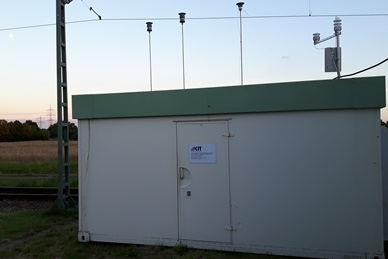
AeroTram findings of unexpected high annual averaged particle number concentrations near Leopoldshafen are investigated in a joint effort by IMK-TRO and IMK-AAF. A measurement container equipped with various gas and particle sensors including most advanced mass spectrometers is deployed near Leopoldshafen to identify the nature and potentially the origin of the high particle concentrations observed by the instrumented AeroTram (http://www.aero-tram.kit.edu/).

The scientific research at AAF is part of the exhibition "GLOBALE: Exo-Evolution" at Center for Art and Media (ZKM, Karlsruhe, Germany). From 31.10 2015 to 28.02.2016 two exhibits, “High speed video recordings of freely levitated freezing droplets” and “Ice crystals growing on feldspar mineral in electron microscope” can be seen in the ZKM, Atrium 8+9. The exhibits show high resolution video recordings of microphysical processes responsible for nucleation and growth of ice in atmospheric clouds. The exhibition opening takes place on Friday, October 30th, 2015 at 7:30 pm.

During September 2015, U.S. and German teams of atmospheric ice nucleation research collaborate at the Storm Peak Laboratory, Steamboat Springs, Colorado, to intercompare methods for sampling ice nucleating particles from ambient air. This activity called FIN03 is the final major experimental activity within the Fifth International Ice Nucleation Workshop (FIN). The KIT PhD student Thea Schiebel is participating in this activity as part of her 3 month visit to the Colorado State University which is supported by the KIT Graduate School for Climate and Environment (GRACE)

This workshop is the most comprehensive ever held concerning atmospheric ice nucleation studies. Three phases include intercomparison of single particle mass spectrometers (FIN01, Nov 2014) and of ice nucleation measurement methods (FIN02, Mar 2015), both held at the KIT AIDA cloud chamber, and intercomparison of methods for sampling ice nucleating particles from ambient air at Storm Peak Laboratory, Steamboat Springs (FIN03, Sep 2015). The FIN activities are supported by NSF, DOE-ASR and DFG (Research Unit INUIT).

The ongoing AIDA-2 project includes the construction of a new lab building, the renovation of the AIDA facility, the installation of an aerosol mass spectrometry lab, and the construction of a novel dynamic cloud chamber. Building construction and AIDA renovation are making good progress. Reopening of the AIDA facility is planned for September after the installation of a new liquid gas supply system.

A web based version of the extensively validated detailed numerical aerosol process model COSIMA-F has been made freely available to the public. This code describes the structural properties and dynamical evolution of ramified aggregates, e.g. freshly emitted soot, based on fractal scaling laws. However, it can also be operated like a conventional aerosol behaviour code when dealing with compact aerosol particles. Several entirely editable default scenarios are available. For more information or conducting your own simulations please visit the COSIMA homepage.

Searching for the ice nucleating particle (INP) types in the atmosheric aerosol is still a major challenge of aerosol-cloud-climate research. Scientists from the Karlsruhe Institute of Technology, the Meteorological Research Institute in Tsukuba, Japan, and the University of Bielefeld have identified cellulose as an important source of atmospheric INPs, as reported in Nature Geoscience 8, 273-277 (2015) .

The effects of ultrafine particles, the smallest constituents of airborne particulate matter, on air quality, atmospheric processes, climate, and human health are by far not finally investigated to proven evidence. The 5th EFCA Ultrafine Particles Symposium will reflect the most recent scientific progress in the field and aims to contribute to the dialogue with policymakers in Europe. The symposium takes place on May 4 - 5 in Brussels, Belgium. It is co-organized by KIT and chaired by the head of IMK-AAF, Prof. Thomas Leisner.

From April 23rd, 2014 until May 23rd, 2014 IMK-AAF participates in the RACEPAC campaign located in Inuvik and Tuktuyaktuk, Northwest Territories, Canada.

For the first time, cloud researchers from the KIT AIDA team participated in laboratory cloud simulation experiments at the Meteorological Research Institute (MRI) in Tsukuba, Japan. From October 1- 11, 2013, they closely collaborated with Dr. Masataka Murakami and his team for ice nucleation studies at the MRI dymanic cloud chamber. These experiments nicely extend and complement ice nucleation studies which are performed within the DFG funded Research Unit INUIT (FOR 1525).

In April 2013 50 scientists from 6 different countries participated with 36 different hygrometers in a blind refereed intercomparison including traceable references. The intercomparison covered conditions simulating the UT/LS (186-233 K, 0.2-1300 ppmv) with static periods and dynamic changes including ice clouds. AquaVIT-2 will help reducing instrument uncertainties in order to better quantify the important role of atmospheric water vapor in weather and climate systems.
more
Together with the Teramobile Collaboration the interaction of fs- laser filaments with clouds was investigated. As detailed in a recent article in the Proceedings of the National Academy of Science of the United States, the laser induced plasma channels did not influence ice nucleation in mixed phase clouds but had a remarkably strong effect on ice clouds at temperatures below the limit of homogeneous freezing. Read more: http://www.kit.edu/visit/pi_2013_13037.php

The effects of ultrafine particles, the smallest constituents of airborne particulate matter, on air quality, atmospheric processes, climate, and human health are by far not finally investigated to proven evidence. The 4th EFCA Ultrafine Particles Symposium will reflect the most recent scientific progress in the field and aims to contribute to the dialogue with policymakers in Europe. The symposium takes place on May 16 - 17 in Brussels, Belgium. It is co-organized by KIT and chaired by the head of IMK-AAF, Prof. Thomas Leisner.
The joint NSF/DFG project ISOCLOUD investigates the water isotope fractionation by combining AIDA cloud simulation experiments with process modelling studies. In October 2012, the project partners achieved simulta- neous measurements of H2O, HDO, and H2(18)O both in the gas phase and the condensed phase. First results show the HDO fractionation to be in agreement with Rayleigh distillation assumptions. In March 2013, further AIDA experiments are planned to measure fractionation factors in cold cirrus clouds.

January 18, 2013. Within the DFG-funded project ISI a team from IMK-AAF is currently investigating the microphysical properties of cloud droplet and ice particles at the high altitude research station Jungfraujoch in Switzerland. The aim of the study is to improve the current understanding of the formation processes and structure of mixed-phase clouds.

In an extensive review article (Hoose and Möhler, ACP 2012), results on ice nucleation by various aerosols, such as dust, soot, organic acids and biological particles, from AIDA and many other laboratory studies are compiled and intercompared. The aim is to provide an easily accessible overview of historic and recent results in this active field of research. One of the figures of this article has also been adapted for the draft of the "Clouds and Aerosols" chapter of the IPCC Fifth Assessment Report (AR5).

The interdisciplinary workshop "Challenges and chances of new Unmanned Aerial Systems (UAS)" took place on September 13-15, 2012, in Karlsruhe and was organized by the IMK-AAF in cooperation with the IPF and FBTA. The workshop received startup funding from the KIT Competence Area “Earth and Environment”. The participants from various fields such as atmospheric, environmental and geo science, photogrammetry, mathematics, computer science and civil engineering discussed recent develop- ments in sensor and UAS technology and evaluated the opportunities arising from new cooperations.
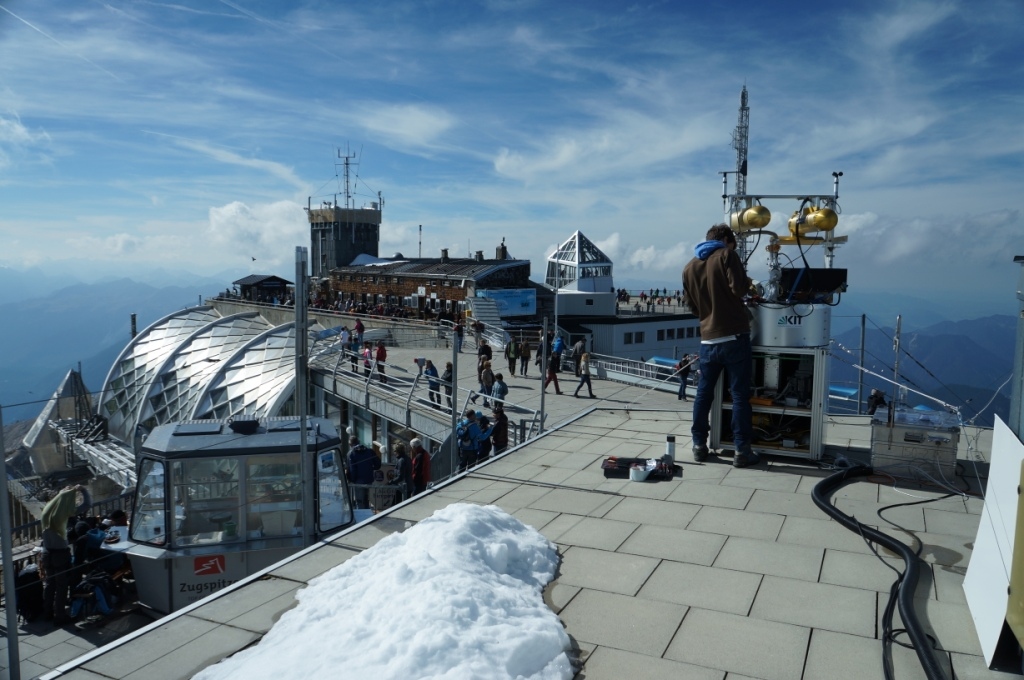
Nine partners of the DFG-funded project ACRIDICON (Aerosol, Cloud, Precipitation, and Radiation Interactions and Dynamics of Convective Cloud Systems) and the AIDAmobile team join on mount Zugspitze during a three week, ground based field campaign starting September 17, 2012. Instruments designed for future missions aboard the High Altitude and LOng Range Research Aircraft HALO will be installed both on the summit and at the environmental research station UFS to characterize cloud microphysical and radiative properties and aerosol-cloud interaction.

IMK-AAF scientists and their AIDA facility participated in the Multiple Chamber Aerosol Chemical Aging Study (MUCHACHAS) demonstrating that chemical conversions induced by hydroxyl radicals, the dominant atmospheric oxidant, significantly increase the concentration of first-generation biogenic secondary organic aerosol (SOA). The principal findings from MUCHACHAS have now been published in the Proceedings of the National Academy of Sciences of the USA (link to PNAS paper).

Ice particles in Arctic boundary layer clouds are in the focal point of the German scientific expedition VERDI. The main goal of VERDI is to understand the role of these clouds in the strong warming observed in the Artic over the last decades. The clouds are probed by a novel set of instruments onboard the Polar 5 research aircraft, which is operated by the Alfred Wegener Institute (AWI). VERDI is based in Inuvik, NWT, Canada, for research flights over the Beaufort Sea.

The formation of the ice phase in tropospheric clouds has multiple impacts on the hydrological cycle and the climate system. Many aspects of ice nucleation induced by a minor subgroup of the atmospheric aerosol system, so-called ice nuclei, remain unclear and will be addressed by the Research Unit INUIT, which was recently established by the German Research Foundation (DFG). In two projects, the IMK-AAF will contribute comprehensive laboratory and modeling studies on ice nucleation.

IMK-AAF disclosed its pioneering Particle Habit Imaging and Polar Scattering (PHIPS) probe in the Journal of Atmospheric Measurement Techniques (October 12, 2011). Developed for the German research aircraft HALO, it simultaneously measures the 3-D morphology and corresponding optical and microphysical parameters of individual cloud particles. The paper outlines the concept and design of PHIPS and discusses preliminary results of two ice cloud campaigns conducted in the AIDA chamber.
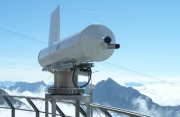
New sampling inlets and continuous aerosol measurements have been installed at the environmental research station Schneefernerhaus (UFS) in summer 2011. The IMK-AAF investigated aerosol - cloud interactions in warm clouds with focus on bioaerosol, soot, water budget in cooperation with the IMK-IFU on three plattforms (UFS, Zugspitze, and ultralight research aircraft) during a 2-week summer campaign.

The International Workshop on Ice Nucleation in Tropospheric Clouds (IN2clouds) was organized by the IMK-AAF within the framework of the Helmholtz Virtual Institute on Aerosol- Cloud Interactions. The workshop took place in Ettlingen on May 23-25, 2011, offering the opportunity to discuss recent and ongoing research activities in the field of aerosol-cloud-climate interactions among the VI-ACI project partners and invited experts from Europe, Israel, U.S.A. and Japan.

The Small Ice Detector (SID3) of IMK-AAF has been successfully deployed on board the NASA WB-57F aircraft during the Mid-latitude Airborne Cirrus Properties Experiment (MACPEX) in April 2011. SID3 single particle data will give unique contributions to the question on the microphysical nature of the smallest ice crystals and how important these particles are for the radiative forcing.

On February 25th 2011, FameLab Baden-Württemberg took place in Karlsruhe for the first time: FameLab is a competition where students have only 3 minutes to explain a complex scientific subject and convince the audience with their creative performance. Among the participants was Isabelle Steinke, PhD student at IMK-AAF. Learn more about what experiments at the AIDA cloud chamber have in common with Germany’s Next Topmodel: http://www.youtube.com/watch?v=jgsv_xEsfYY

Controlled ice formation on sub 10 nm condensation nuclei has been observed for the first time under mesospheric conditions at the Atmospheric Nanoscience group. The laboratory experiment took place in a cooled linear radiofrequency ion trap in an ice-oversaturated environment, where free iron-oxide particles with growing ice shells could be stored for several seconds. In the near future systematic investigations of ice nucleation probabilities and growth rates of mesospheric relevant materials are planned.

The nucleation and growth of pristine ice crystals attached to a frozen water droplet levitated in the Electro-Dynamic Balance (EDB, also known as “Paul trap”) has been recently observed at IMK-AAF. The newly developed environmental EDB allows for controlling the humidity and temperature profiles inside the trap, thus providing a unique tool for studying the evolution of single ice crystals.

Organic aerosols are ubiquitous in the atmos-phere. At low temperatures they are known to become glassy, that is, amorphous, non-crystalline solids. AIDA cloud chamber experiments demonstrate heterogeneous nucleation of ice on glassy citric acid particles (Murray et al., Nature Geoscience 2010).

In the first global modelling study of heterogeneous ice nucleation by biological particles, Hoose et al. (http://iopscience.iop.org/1748-9326/5/2/024009/fulltext) show that typical atmospheric bacteria, fungal spores and pollen concentrations are too low to make a significant impact for cloud ice and precipitation formation. The research is featured in a news article on environmentalresearchweb. org.

Dr. Corinna Hoose and her Young Investigators Group “Aerosol effects on cloud ice, precipitation and climate“ will work on improved parameterizations for aerosol-cloud interactions in numerical models on different scales. A special focus is on cloud ice formation.

IMK-AAF participates in the new Marsilius Project “The Global Governance of Climate Engineering” which focuses on options and risks in dealing with climate change by technological means. The Marsilius Kolleg was recently established at the University of Heidelberg as a Centre for Advanced Study to promote interdisciplinary dialogue and research.

The IMK-AAF Atmospheric Nanoscience Group joins a three week measurement campaign at the synchrotron source BESSY II in Berlin. Research objective is the identification of polymorphs of nanometric ironoxide cloud nucleation seeds. Nanoaerosols ablated from meteorites are expected to play a crucial role in the formation of mesospheric noctilucent clouds.

In February, IMK-AAF conducted a feasibility study at the environmental research station Schneefernerhaus (UFS). The aim of the study was to show that the UFS is well suited to measure aerosol - cloud interactions in natural clouds.
